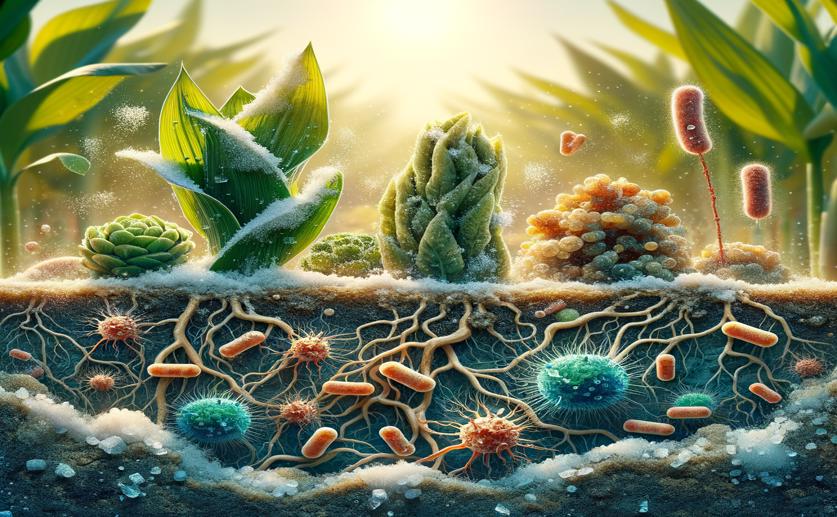
How Salty Soil Affects Bacteria in Plants and Crops
Jim Crocker
19th July, 2024

Image Source: Natural Science News, 2024
Key Findings
- The study by Humboldt University analyzed the microbiomes of salt-tolerant plants (halophytes) and non-halophytes to understand how they adapt to high salinity
- Halophytes have distinct microbial communities that help them cope with high salinity, unlike non-halophytes
- Certain bacterial taxa are consistently found in halophytes and may be key to their ability to survive in salty environments
AgricultureBiochemPlant Science
References
Main Study
1) Unveiling the influence of salinity on bacterial microbiome assembly of halophytes and crops
Published 18th July, 2024
https://doi.org/10.1186/s40793-024-00592-3
Related Studies
2) Increasing the number of stressors reduces soil ecosystem services worldwide.
3) Global Warming, Climate Change, and Environmental Pollution: Recipe for a Multifactorial Stress Combination Disaster.
4) Recognizing Salinity Threats in the Climate Crisis.
5) Effects of the salinity-temperature interaction on seed germination and early seedling development: a comparative study of crop and weed species.



 13th July, 2024 | Jenn Hoskins
13th July, 2024 | Jenn Hoskins